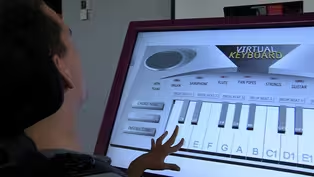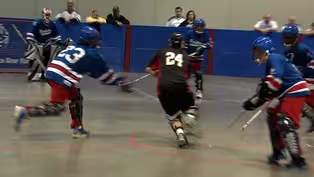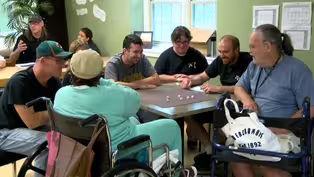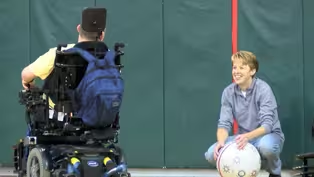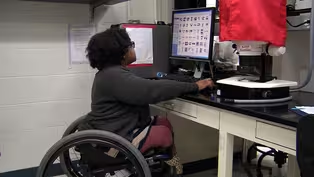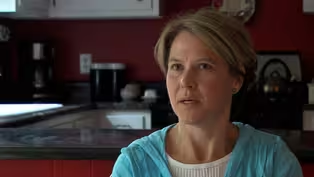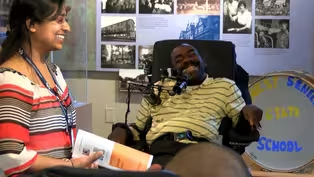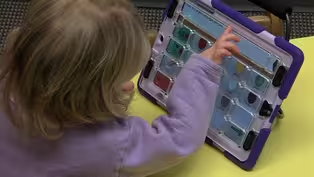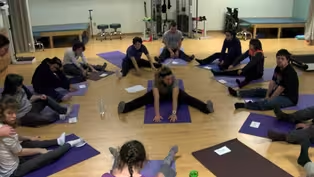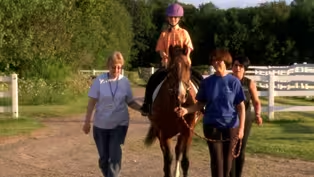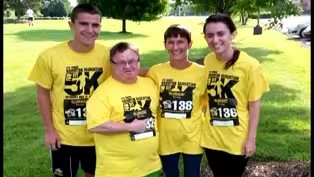Move To Include
Kevin Spencer
Special | 4m 24sVideo has Closed Captions
Using magic tricks to help therapists provide better care to people with disabilities.
Meet Kevin Spencer. He uses magic tricks to help therapists provide better care to people with disabilities.
Problems playing video? | Closed Captioning Feedback
Problems playing video? | Closed Captioning Feedback
Move To Include is a local public television program presented by WXXI
Move To Include
Kevin Spencer
Special | 4m 24sVideo has Closed Captions
Meet Kevin Spencer. He uses magic tricks to help therapists provide better care to people with disabilities.
Problems playing video? | Closed Captioning Feedback
How to Watch Move To Include
Move To Include is available to stream on pbs.org and the free PBS App, available on iPhone, Apple TV, Android TV, Android smartphones, Amazon Fire TV, Amazon Fire Tablet, Roku, Samsung Smart TV, and Vizio.
More from This Collection
Homework Hotline, designed for grades 4 through 12, provides the tools students need to succeed both in and out of the classroom, & supports academic achievement across a variety of learning standards. This collection is specifically curated by Move to Include & presents in-depth stories & profiles of individuals & organizations who are working to make our community inclusive & accessible for all.
Video has Closed Captions
How touch screen technology is making learning more accessible for all students. (2m 58s)
Video has Closed Captions
See how floor hockey is helping these players both in and out of the rink. (2m 16s)
Video has Closed Captions
A program that specializes in working with individuals suffering from traumatic brain injury. (4m 6s)
Video has Closed Captions
Recreational activities through adaptive sports and inclusive recreation. (5m 27s)
Video has Closed Captions
Genomics and how scientists use computers to analyze data. (2m 55s)
Video has Closed Captions
Kerrie Giesen tells us what it is like to have Multiple Sclerosis and how her life has changed. (3m 11s)
Video has Closed Captions
Many people with disabilities were sent to live in institutions away from their families. (2m 28s)
Video has Closed Captions
Charles uses eye gaze technology and a device called a Dynavox to help him communicate. (2m 21s)
Video has Closed Captions
How speech pathologists help children with communicative disorders. (2m 25s)
Video has Closed Captions
Equine assisted therapy. Learn about the benefits of working with horses. (2m 37s)
Video has Closed Captions
We ask Pat and his family how Down Syndrome has impacted their lives. (2m 40s)
Providing Support for PBS.org
Learn Moreabout PBS online sponsorshipYou know, if I told a child or an adult that I needed you to do this movement ten times every day for the next week, they may do that for the first day or the second day, but after a while.
I mean, what's the purpose of doing this movement?
But if I can move, if I can work this movement into a magic trick.
So now that every time they're working on this trick, they have to do something like this with their hands.
They're not even thinking about the fact that they're doing that movement.
They're just trying to master the magic trick.
Today, we're going to learn a few tricks with rubber bands.
A really cool paperclip trick.
Probably my favorite one.
Some things with a piece of rope.
And each one of these tricks will engage parts of their bodies and minds in different ways.
It's the healing of magic, which is a side this dedicated to health care.
So we work with occupational, physical and speech therapists, giving them another tool in their toolbox and teaching them these simple little magic tricks as a way that they can engage and motivate their clients in their therapy process.
And then you can end up with one medium sized piece of rope, two medium sized pieces of rope and three medium sized pieces.
Now, it's not a good trick if you can't pull these back to your hand and pull out one short rope, one medium and one long.
The other side of that is hocus focus, and that is our education component uses the same tricks.
But now we're working with children, mostly children with a learning disability classification.
Let's talk about this one therapeutically for a moment.
First of all, it brings in every basic concept.
Up, down, left, right, front, back, top to bottom.
All of those concepts are in the back.
So that's really easy to start there.
Now, we're not just working on the physical aspects that we do in health care, but we're also working on the cognitive aspects, the planning and sequencing, organizing tasks and movements, concentration and attention.
So it's about dexterity.
You have to be able to manipulate the props in order to do the trick.
So magic works on those skills.
And then it's about motivation because you want to do something that perhaps the normal able bodied person can't do.
You're going to focus on learning that magic trick.
And then there's the social component, because you want to perform that for somebody when you're done.
And this, I think people sometimes have the wrong idea about what magic is.
You know, sometimes I think they almost confine it to that cartoon sort of thing where the guy with his mustache in this case comes out and waves his hand and poof, and something magical happens on the stage.
And when you're going in, you're talking to health care providers or special education teachers, and you say, hey, let me teach you some magic tricks to help your patients.
I think that the first flag that goes off in their mind is, Are you nuts?
It only takes about 10 minutes of being exposed to the concepts of the program before that light bulb goes off in their brain and they go, Oh my gosh, this makes total sense to me.
The secret move happens as you pivot your head back.
So what happens is you put all four fingers down inside the hole of the rubber band, so it runs right along your fingertips just like this.
Now all you have to do is open all four fingers at the same time.
And the rubber band would jump to the other side.
So the next thing that we did was actually engage in some pretty robust scientific research.
We didn't just want to have that anecdotal evidence that says, Well, we know it works because so-and-so did it and they got better.
We wanted to be able to look at it from a scientific point of view and measure the result in your hand.
The rubber bands would change places.
But I can tell you, when you sit down with the child and you teach them a magic trick and for the first time you watch something, connect and they smile and they look at you and they say, Look, I did it.
I'm a magician, too.
That's bigger than any applause that you could get from an audience.
And it changes you as an artist.
It changes you as a person.
And when when you realize that what you do to entertain people also has the ability to impact the quality of their life.
That's a pretty phenomenal thing.
One finger will pull the first rubber band out, Use the same.
Support for PBS provided by:
Move To Include is a local public television program presented by WXXI
